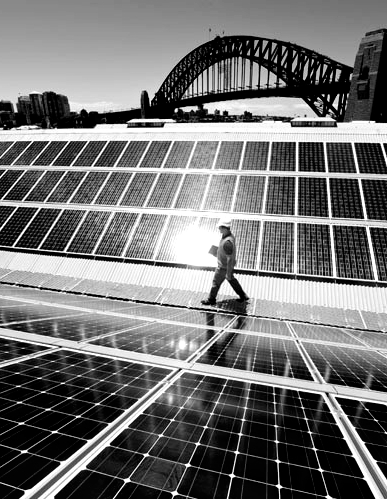Grattan slams rooftop rort
 A new report says the cost of programs to encourage rooftop solar systems have outweighed the benefits by $9 billion.
A new report says the cost of programs to encourage rooftop solar systems have outweighed the benefits by $9 billion.
The paper by the Grattan Institute think tank says Australians without a rooftop solar setup will pay a $14 billion subsidy to those who do.
The report has been used to call for sweeping reforms to power pricing, more smart meters and changes to electricity forecasting.
It says solar feed-in tariff schemes combined with the current structure of electricity pricing mean “governments have created a policy mess that should never be repeated”.
Under the current pricing scheme, customers pay a flat rate regardless of whether power is used at a peak usage period or when demand is low.
People with solar panels pay less because they use less grid power, but because solar panel output declines in the later afternoon (during the peak), consumers without panels are subsiding those with panels.
Grattan energy program director Tony Wood and energy fellow David Blowers say that solar rooftop programs have cut emissions, but it has been at the high price of about $170 a tonne.
This is much higher than the Gillard government’s carbon price of $24.15 a tonne, and higher still than the Abbott government’s bill of $13.95 a tonne for carbon abatement after the first emissions reduction auction last month.
“Emissions could have been reduced in a cheaper and fairer way,’’ Mr Wood said.
The electricity regulator is changing the pricing scheme to include cost-reflective pricing for electricity by 2017.
The change means those with solar panels will pay more to use the network, in a move that should make installation of new solar panels in most capital cities no longer profitable.
Under Grattan’s modelling, installing a new 3 kilowatt photovoltaic (PV) system would be economically beneficial only in Adelaide from 2017.
Perth customers could get close to breaking even but those in Brisbane would need the cost of the equipment to drop by $500, over $1000 in Sydney and by nearly $2000 in Melbourne.
Luckily, other reports predict a 25 per cent fall in the cost of solar panels, in which case only Melbourne would not be viable in 2017.
Australia has the world’s highest proportion of households with solar PV setups, with about 1.4 million nationwide.
But with electricity pricing based on simple consumption without regard to peak or off-peak times, consumers who do not have air conditioners or solar panels subsidise those who do, Mr Wood said.
“Households pay their network charge based on their average power use over a given time period. Since solar households consume less electricity overall, they pay less than other households to use the network,” he told news Corp reporters..
“But they place a similar amount of strain on the distribution network as those without solar PV, since peak use of the residential network usually occurs in the early evening when there is little or no solar output.”







 Print
Print